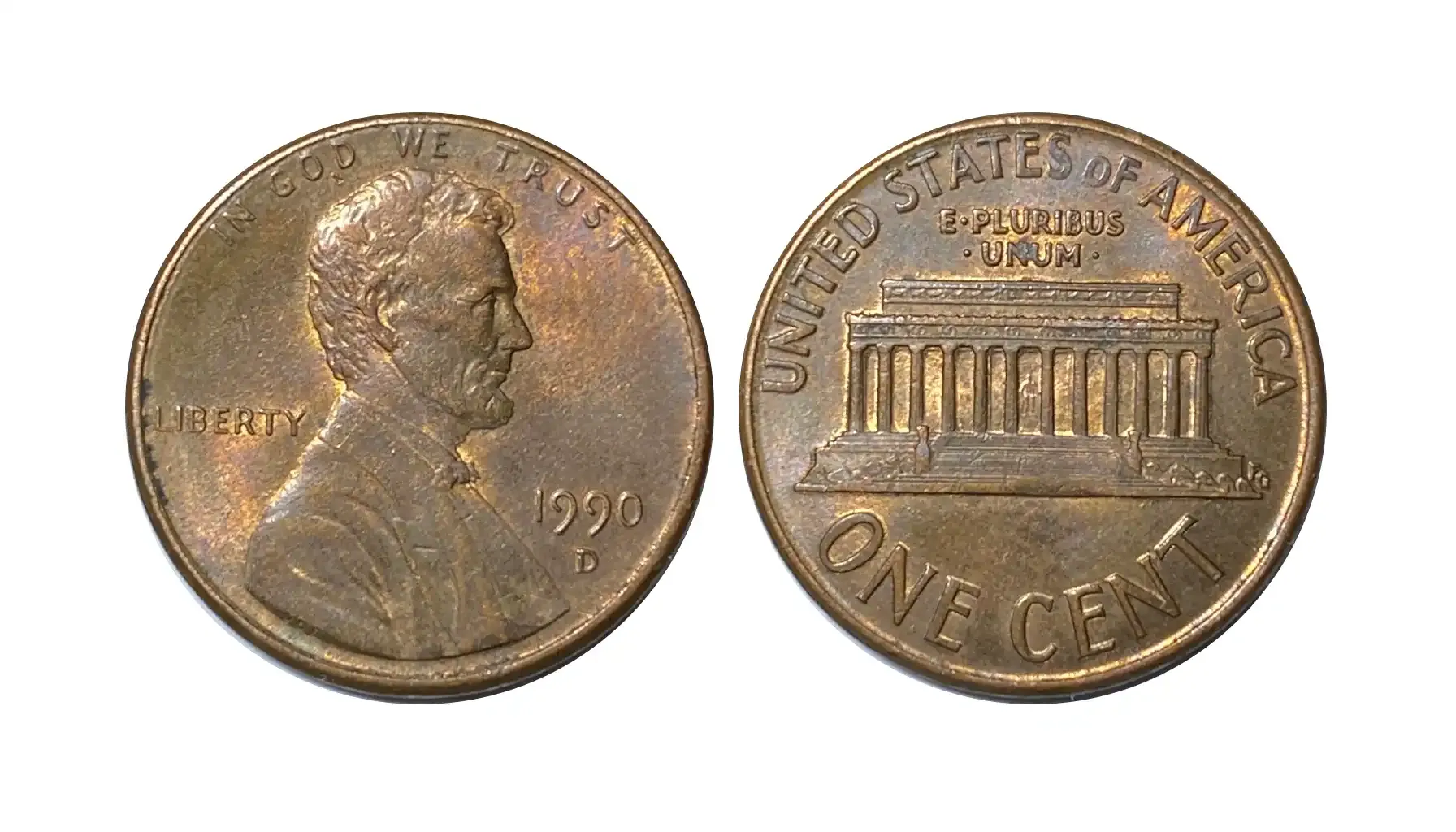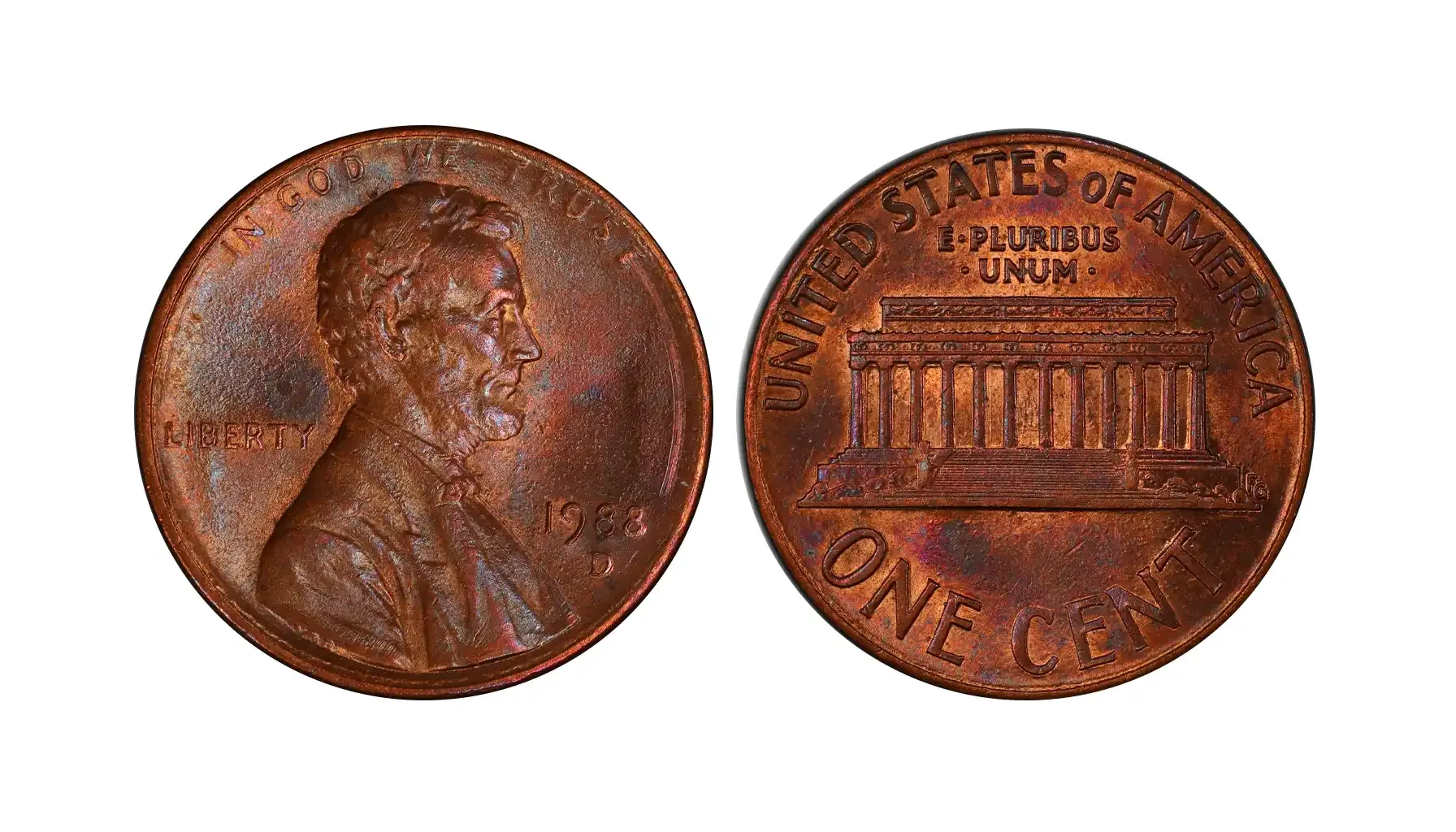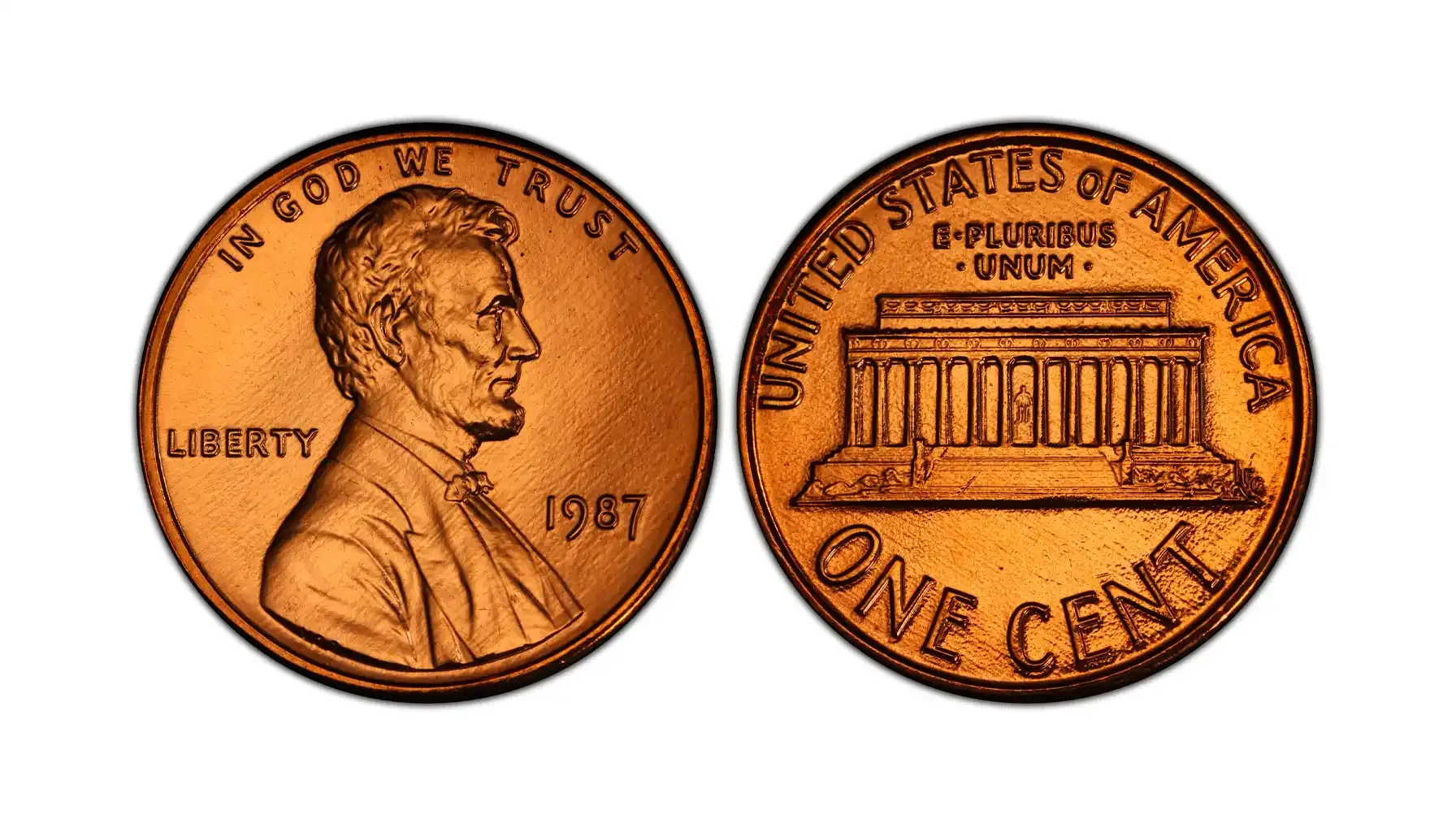Contents:
The 1853 Half Dime or the 1853 Seated Dime with Arrows and Rays, is a true gem for collectors, and here's why.
History and Uniqueness
This token was issued during a fascinating period for the United States, just prior to the Civil War. In 1853, the U.S. government enacted legislation that altered the weight of certain silver money. This was done to counteract the widespread melting of these coins, as the intrinsic value of the silver within them had surpassed their face value.
To clearly distinguish these new, lighter pieces, two key design elements were incorporated:
Arrows: Two arrows were added to the sides of the date, signifying the weight modification.
Rays: Rays emanated from the eagle on the reverse of the token.
These design changes were temporary. By 1854, the rays were removed, though the arrows persisted until 1855. It is this brief production period and the distinct design featuring both arrows and rays that render the 1853 Half Dime so highly sought after by collectors. This essentially makes it a "one-year type" issue, a characteristic that consistently enhances 1853 Half Dime value in numismatics.
Scan your token via a free coin identifier app and get instant results on its history and value.
Why Do Collectors Want It?
Historical Significance: The piece reflects an important moment in US monetary policy.
The rarity of the design: The design "with arrows and rays" is found only on coins from 1853 (rays). But many collectors are interested in the 1853 Seated Liberty dime value, not a half.
Visual appeal: The addition of arrows and rays makes the coin more complex and aesthetically interesting.
Challenge: It can be difficult to find such a dime in good condition, which adds excitement to the collecting process.
Variants of the Half Dime 1853 Value
The 1853 Dime worth was issued in several mints. The mint mark is usually located under the eagle on the reverse.
1853 Half Dime from the Philadelphia Mint (No Mint Mark)
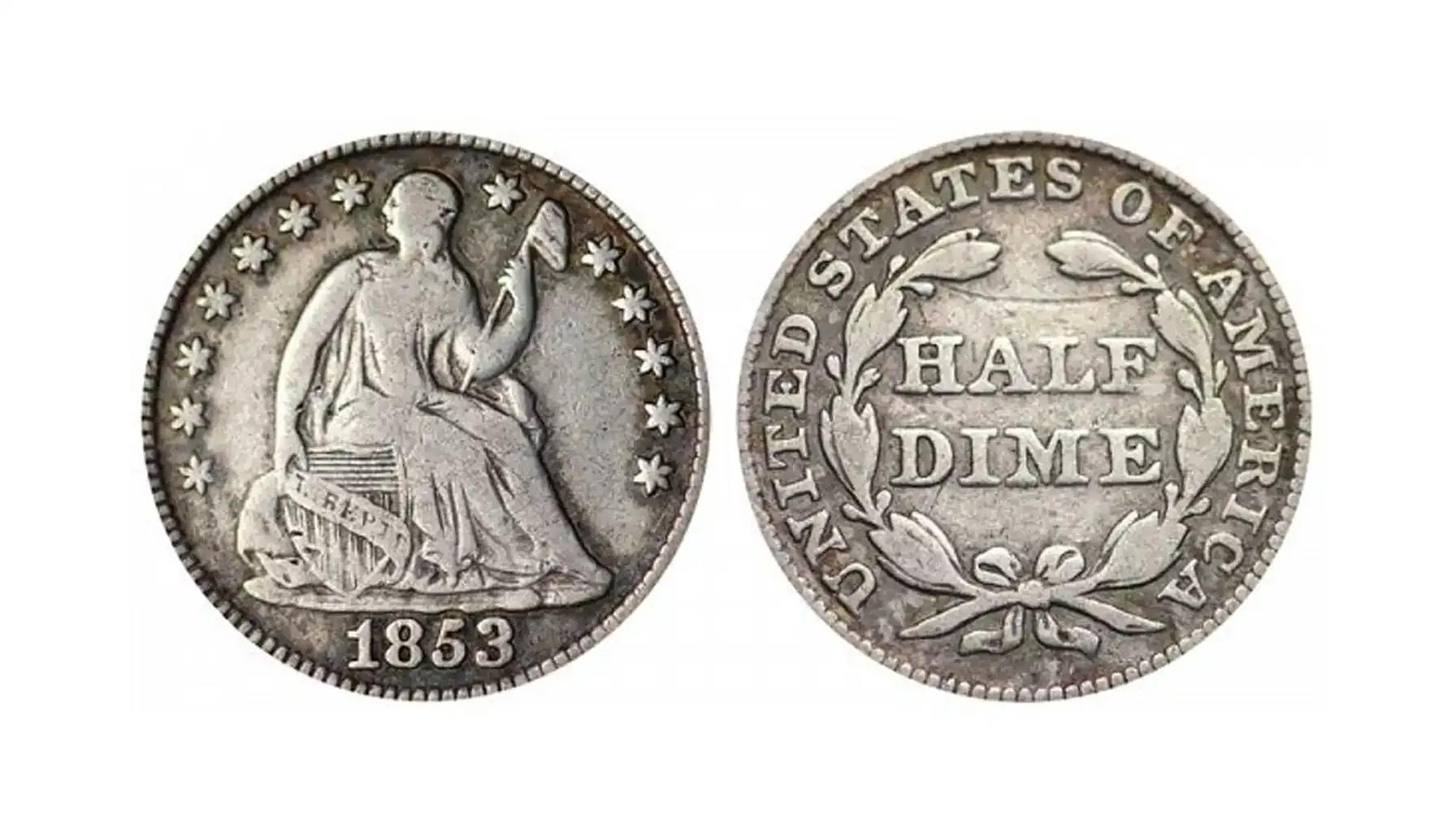
Diameter: 15.5 mm
Weight: 1.24 grams
Mintage: 13,210,020
Mint: Philadelphia
Metal: 90% Silver, 10% Copper
Coin Condition | Approximate Auction Price (USD) |
Fair (FR) | $30 - $50 |
Good (G) | $50 - $80 |
Very Good (VG) | $80 - $120 |
Fine (F) | $120 - $200 |
Very Fine (VF) | $200 - $400 |
Extra Fine (EF) | $400 - $800 |
About Uncirculated (AU) | $800 - $1,500 |
Uncirculated (UNC) | $1,500 - $5,000+ |
1853 Half Dime from the New Orleans Mint (Mint Mark "O")
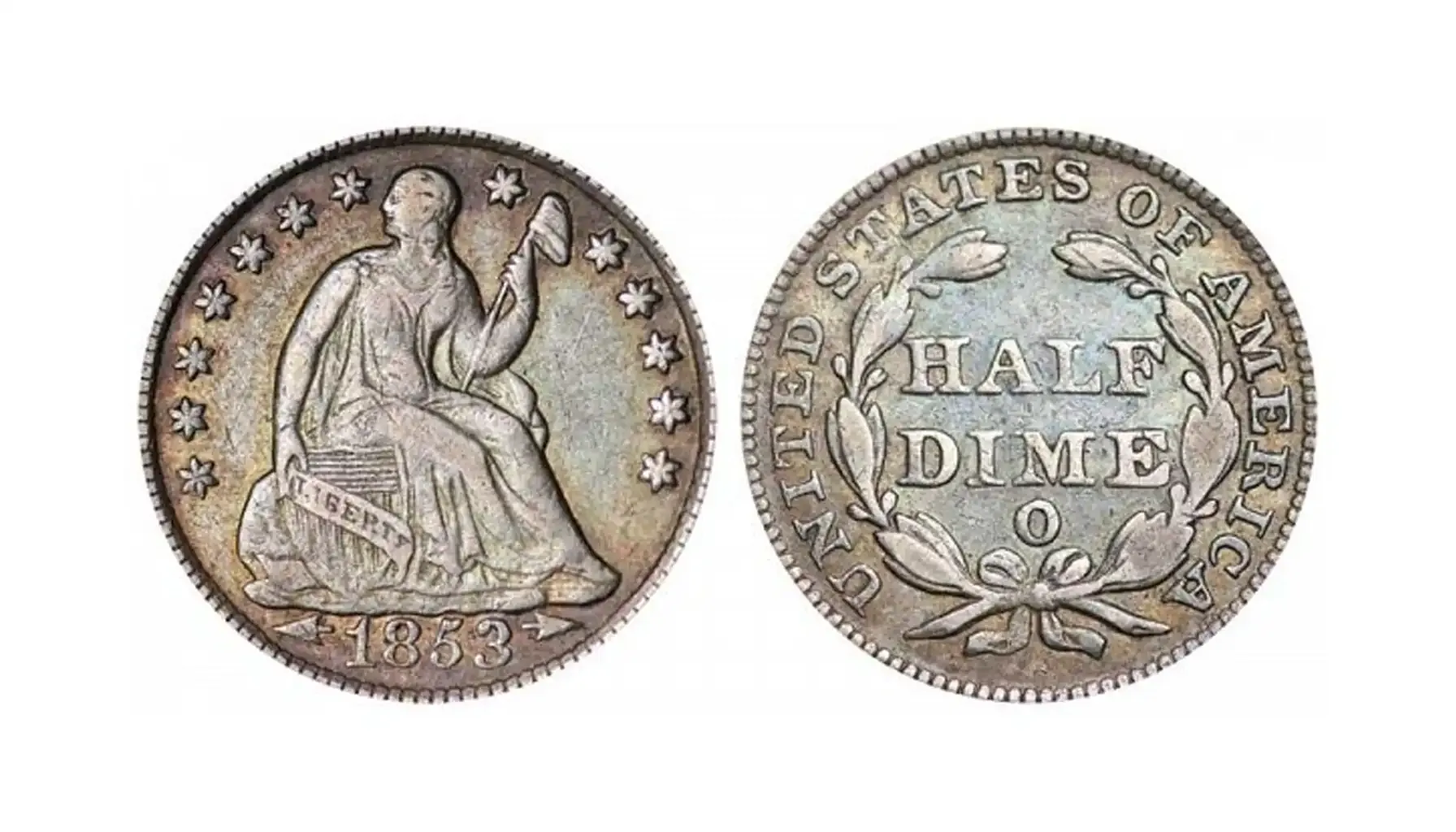
The 1853 O half dime coins from New Orleans are usually rarer than Philadelphia coins.
Diameter: 15.5 mm
Weight: 1.24 grams
Mintage: 2,200,000
Mint: New Orleans
Metal: 90% Silver, 10% Copper
Coin Condition | Approximate Auction Price (USD) |
Fair (FR) | $40 - $70 |
Good (G) | $70 - $100 |
Very Good (VG) | $100 - $150 |
Fine (F) | $150 - $250 |
Very Fine (VF) | $250 - $500 |
Extra Fine (EF) | $500 - $1,000 |
About Uncirculated (AU) | $1,000 - $2,000 |
Uncirculated (UNC) | $2,000 - $7,000+ |
Important Price Note
The prices shown are the estimated auction prices for the end of 2024 - mid-2025.
The actual cost can vary greatly depending on:
The grade: Even small differences in condition can significantly change the price.
Market demand: The popularity of coins is changing.
Places of sale: Auction house, dealer, private sale.
The presence of errors or rare varieties: Sometimes, minor differences in the stamp can significantly increase the cost.
Actual Silver Weight
The 1853 Half Dime weighs 1.24 grams and it is composed of 90% silver and 10% copper.
Therefore, to determine the ASW, you should multiply the total weight by the silver proportion:
For the 1853 Half Dime with arrows value: 1.24 grams * 0.90 = 1.116 grams of pure silver.
Why Do I Need to Know It?
ASW helps to understand the "metal" value of a numismatic piece. If you know the ASW and the current price of silver on the market, you can calculate how much is a 1853 half dime worth. However, remember: the collectible value of an old one is almost always much, much higher than just the value of the metal.
Errors Double the Price
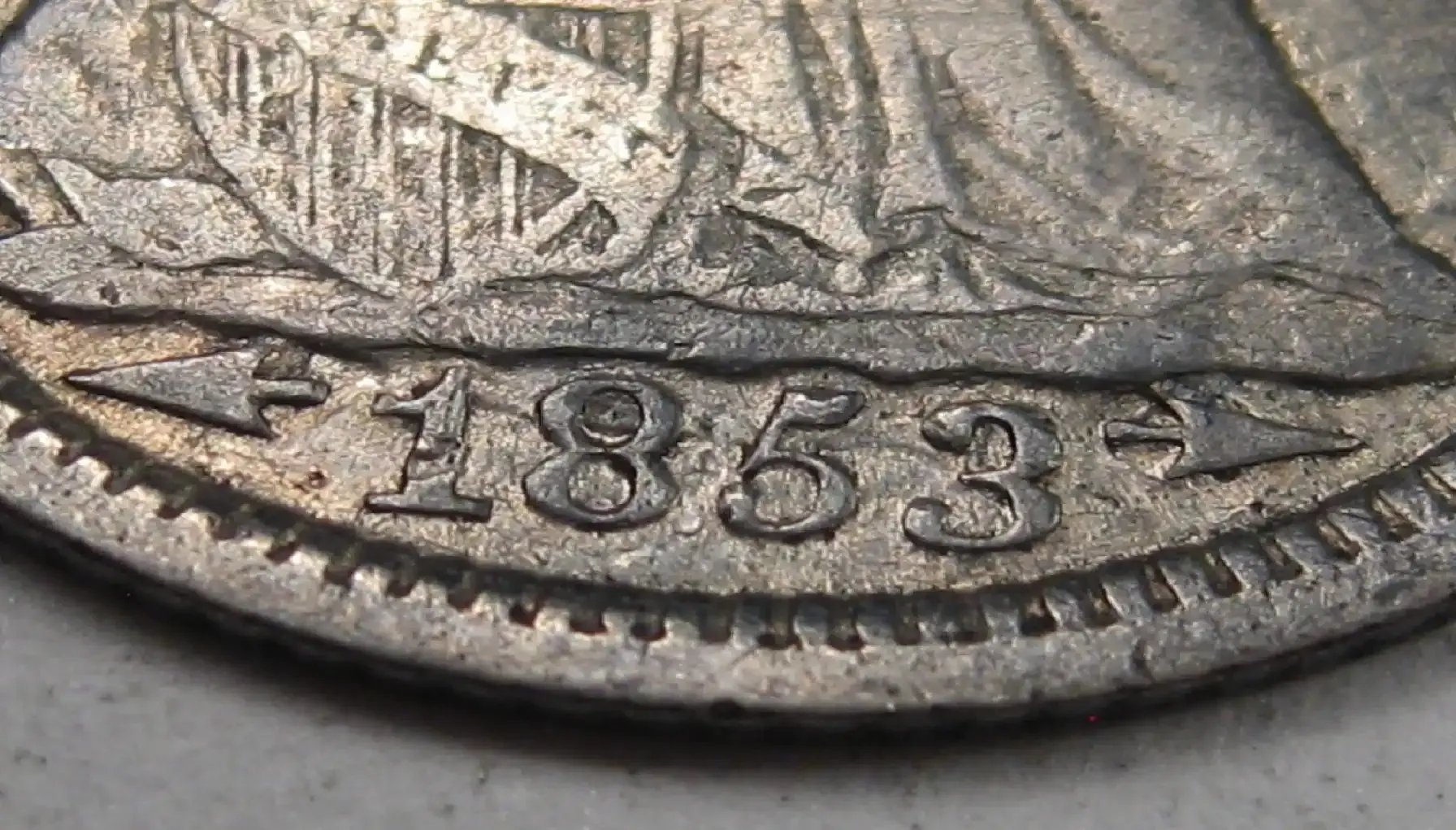
In numismatics, errors and defects add to the 1853 Seated Liberty half dime and significance of the coin. But it is important to understand that the defect must be due to a manufacturing error, not an artificially created one.
Here are the most popular mistakes that can make the collection more interesting:
Double Die: When the letters or numbers on a coin look slightly blurred, as if they were printed twice. This is due to an error in the stamp, the shape in which the coin is minted.
Off-Center Strike: When a coin is not minted in the center of the blank (round piece of metal), and part of the pattern has "gone" over the edge.
Die Break/Cup: When a crack appears on the stamp or a piece breaks off from it, and this defect is imprinted on the coin as a convex line or outgrowth.
Off-Metal Planchet: This is one of the rarest and most expensive mistakes when a coin is minted on a billet made of another metal, for example, a copper one that was supposed to be made of steel.
How Do People Determine the Value of Any Coin?
Determining the value of a coin is a complex process that requires knowledge and experience. Numismatists and appraisers consider several key factors:
Grade
This is perhaps the most important factor. The grade of the 1853 Seated Liberty dime with arrows value describes the degree of its wear and tear. The less a coin has been in circulation and the better its details have been preserved, the more valuable it is. Standardized scales are used to assess the condition (for example, the Sheldon scale from 1 to 70, where 70 is the ideal condition).
Experienced numismatists can determine the grade "by eye", but for valuable coins, the services of professional grading companies (for example, PCGS, NGC) are often used, which place the coin in a special slab (sealed capsule) indicating the grade.
Examples of grades:
Poor (PO), Fair (FR), Good (G): Heavily worn, the details are almost indistinguishable.
Very Good (VG), Fine (F), Very Fine (VF): Moderate wear, the main details are visible.
Extra Fine (EF), About Uncirculated (AU): Minimal wear and tear, almost as good as new.
Uncirculated (UNC) / Mint State (MS): Coins that have never been in circulation and have retained their original luster.
Life Hack: If you are eager to get the info on your token - take a picture of it, upload it to Coin ID Scanner app - and you will see all details about the coin in less than a minute
Rare
Circulation: The fewer examples of this type were issued, the rarer they are and, as a rule, the more expensive.
The number of existing copies: It is important not only how many were produced, but also how many of them have survived to this day, especially in good condition. Some coins may have been melted down or lost.
Demand: If a certain token is in high demand from collectors, its price will rise, even if it is not the rarest. Demand may be driven by:
Historical 1853 Seated Half dime value: Coins associated with important events or personalities.
Aesthetic appeal: Beautiful or unique design.
The popularity of the series: For example, coins from popular series such as "Standing Liberty Quarters" or "Morgan Dollars".
Historical significance: Coins that have played an important role in the country's history or are part of significant events are valued higher. For example, coins of the transition period, like the 1853 dime value.
The presence of errors and varieties: Minor manufacturing errors (for example, misalignment of the stamp, double impact) or minor design changes (stamp varieties) can make the coin unique and very valuable. For example, the "Double Die Obverse" on certain coins can increase the value of 1853 half dime by thousands of times.
Metal and Sample: Although most collectible coins are not valued for their metal content, for some antique coins the 1853 dime with arrows value of the metal (gold, silver) may be the base price. However, the numismatic value almost always exceeds the metal value for rare and well-preserved specimens.
The Evaluation Process
Usually, the assessment begins with a visual inspection of some 1853 one dime condition. Then they compare it with well-known catalogs, for example, "A Guide Book of United States Coins" - "Red Book" for American money, auction results and sales databases. For very valuable coins, it is recommended to contact professional grading services that provide independent evaluation and certification.
In conclusion, understanding the value of a coin is not an easy task that requires preparation. Despite the fact that collecting coins requires great attention to detail, it is one of the most popular and interesting hobbies in the world.

